











































































































CONTACT THE DN
Newsroom: 765-285-8245
Editor: 765-285-8249, editor@bsudailynews.com
EDITORIAL BOARD
Kate Farr, Editor-in-chief
Trinity Rea, Print Managing
Editor
Olivia Ground, Digital Managing
Editor
Katherine Hill, News Editor
Meghan Braddy, Associate News
Editor
Zach Carter, Sports Editor
David Moore, Associate Sports Editor
Derran Cobb, Associate Sports Editor
Ella Howell, Lifestyles Editor, Copy Editor
Maria Nevins, Video Editor, Podcast Editor
Layla Durocher, Social Media
Editor
Andrew Berger,Photo Editor
Isabella Kemper, Associate
Photo Editor
Jessica Bergfors, Visual Editor
Brenden Rowan, Visual Editor
Corey Ohlenkamp, Adviser
The Ball State Daily News (USPS-144-360), the Ball State student newspaper, is published Thursdays during the academic year except for during semester and summer breaks. The Daily News is supported in part by an allocation from the General Fund of the university and is available free to students at various campus locations.
TO ADVERTISE
• (765) 285-8256 or dailynewsads@bsu.edu
• Hours: 8 a.m.-5 p.m. Mon-Fri.
• ballstatedaily.com/advertise
TO SUBSCRIBE
Call 765-285-8134 between 9 a.m. and 3 p.m. Mon. -Fri.
Subscription rates: $45 for one year. POSTMASTER: Send address changes to Daily News, AJ278, Ball State University, Muncie, IN 47306
JOIN THE DAILY NEWS Stop by room 278 in the Art and Journalism Building. All undergraduate majors accepted and no prior experience is necessary.
In the Oct. 17 issue of the Ball State Daily News, pg. 09 stated that the fall exhibition at the David Owsley Museum of Art features art by Elizabeth Catlett and Samella Lewis. To clarify, the art is by Catlett but the collection is owned by Lewis.
To submit a correction, email editor@bsudailynews.com.































































Ball State University communications studies professor and former university debate coach Michael Bauer has died, according to a Ball State Communication Studies Instagram post. Bauer taught for 34 years at the university.




Bauer led the Ball State University debate team to multiple national championships and mentored over 50 all-American debaters since joining university staff in 1991.


According to the post, Bauer grew up in Nebraska and was a walleye tournament fisherman and enjoyed fishing recreationally. He also served as the Muncie recreational league director and coached soccer for 20 years.
Oct. 20: The Delaware County Council passed a moratorium, a temporary prohibition of an activity, on any further tax abatements for solar energy projects. When introduced in September, council members discussed the fact that many alternative energy projects don’t need tax abatements to operate, so it wouldn’t stop those companies from trying to locate in Delaware County. Councilman Ryan Webb called it “a message” that Delaware County wasn’t interested, according to reporting from Indiana Public Radio (IPR). That moratorium is on any solar project anywhere in the county. It is not limited to agricultural land projects.


Oct. 22: Nearly 170 are vying to claim one of 100 seats in the Indiana House of Representatives. Currently, republicans hold 70 seats while democrats hold 30. The GOP supermajority means republicans don’t need democrats present to conduct business like passing legislation, according to reporting from Indiana Capital Chronicle. Delaware County has three House representative seats up open for elections, with running incumbents being Sue Errington (D), J.D. Prescott (R) and Elizabeth Rowray (R). Early voting has already started in Indiana and the ability to register to vote has already ended, however, those ready to vote can learn more about the potential candidates online by visiting the VOTE411 website.


Indiana University’s Media School plans to cut the Indiana Daily Student’s print edition.
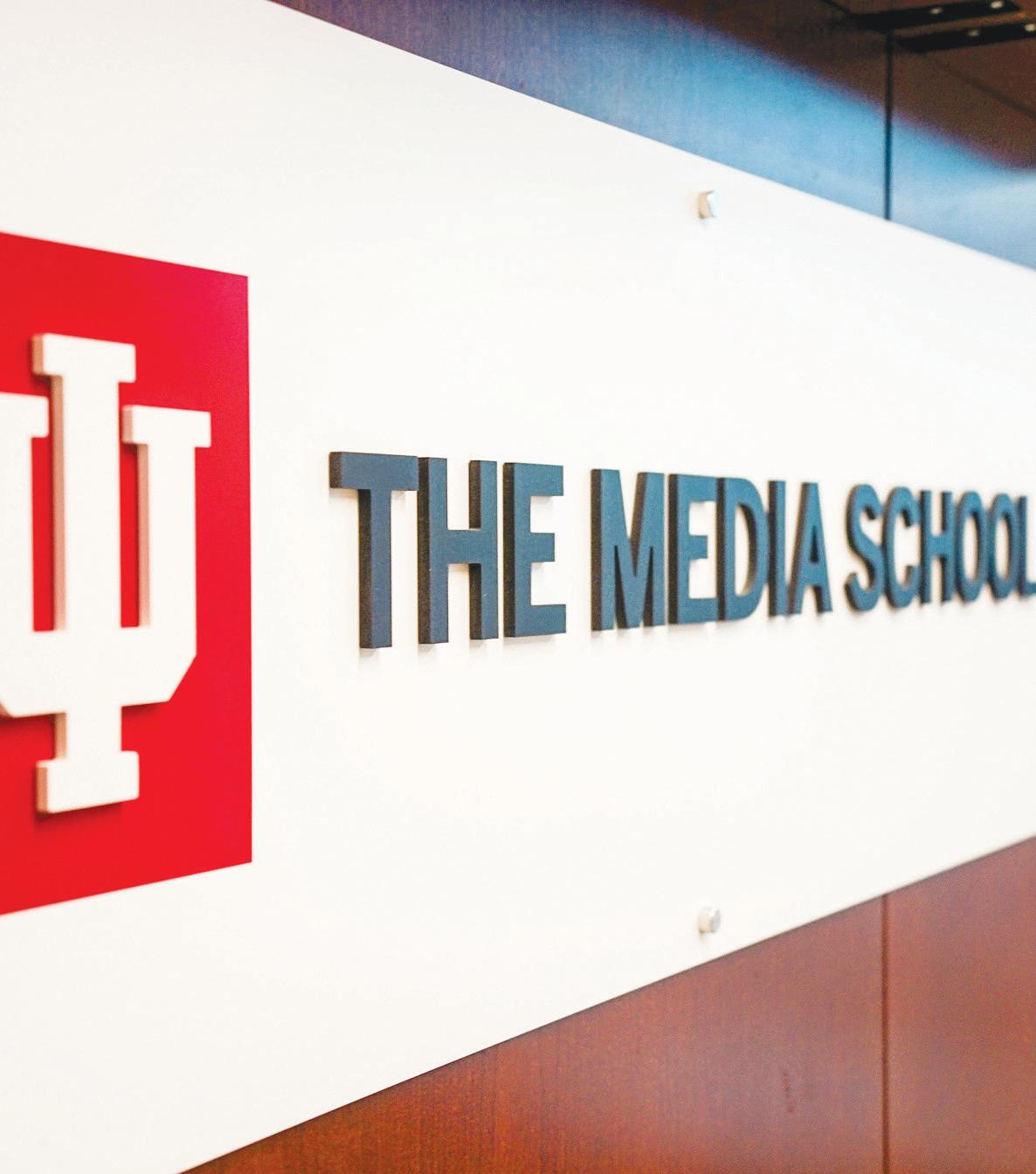
Students in Indiana expressed concern over a lack of polling places on college campuses. Nearly 41 million Generation Z Americans are eligible to vote in November’s election and roughly 18 million are in college. It makes all the difference if the election comes down to small margins, according to Indiana Capital Chronicle.
Thursday, Oct. 24 is the last day Hoosiers can apply for an absentee ballot to vote by mail in the 2024 election Nov. 5. You can apply in person at your local election administrator’s office by 5 p.m. local time Oct. 24. You have until midnight if you apply online at IndianaVoters.com.
Commissioner candidates Stephen Brand (R) and Ashley Wright (D) were concerned about housing in the county during their Oct. 17 debate, but they differed in solution. Brand pitched a plan to bring more housing to Delaware County; Wright sought to remodel and rehab existing properties, according to Indiana Public Radio.
310, 720 approximately
women will be diagnosed with invasive breast cancer in 2024.
Women in the United States will be diagnosed with breast cancer in their lifetime.
four million approximately
breast cancer survivors are in the United States, including women who are still being treated and who have completed treatment.
Women have
Twice the risk
of breast cancer if they have an immediate family who had breast cancer compared to women without a family history of breast cancer.

Transmasculine people have a lower risk of breast cancer than women but a higher risk than men in the general population.
Check your armpit and breast area
Use the pads of your fingers to perform the exam
Transfeminine people have a much lower risk of breast cancer than women but a higher risk than men in the general population
Move and feel in an up and down motion for lumps
Move and feel in a circular motion for lumps
Move and feel out from the nipple in sections, feeling for lumps
• Black women are 42 percent more likely to die from breast cancer.
• Black women are more likely to develop more aggressive, more advanced-stage breast cancer and be diagnosed at a young age.
Look at your breasts in a mirror for noticable lumps or dimples on your breast
Look at your breast in a mirror for noticeable changes in skin color or texture
Check your nipples for noticible leakage or changes in color or texture
• Breast cancer is the leading cause of death in Latina women.
Source: American Cancer Society, Breastcancer.org, National Breast Cancer Foundation, Susan G. Komen Olivia Ground, DN Design







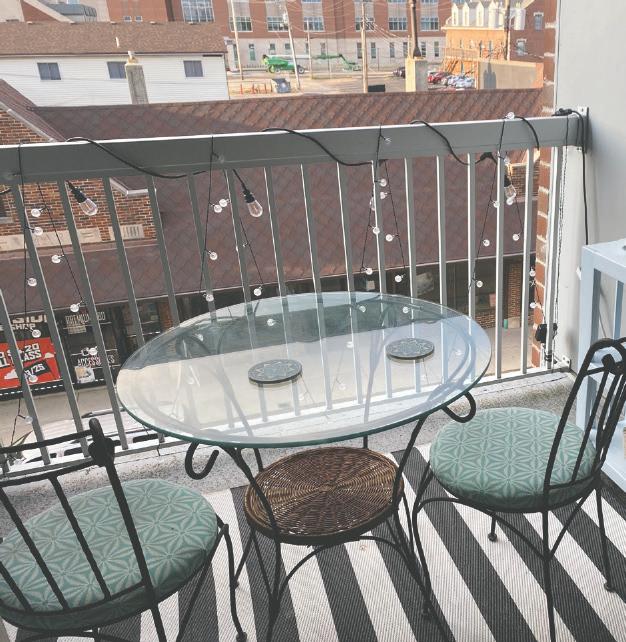


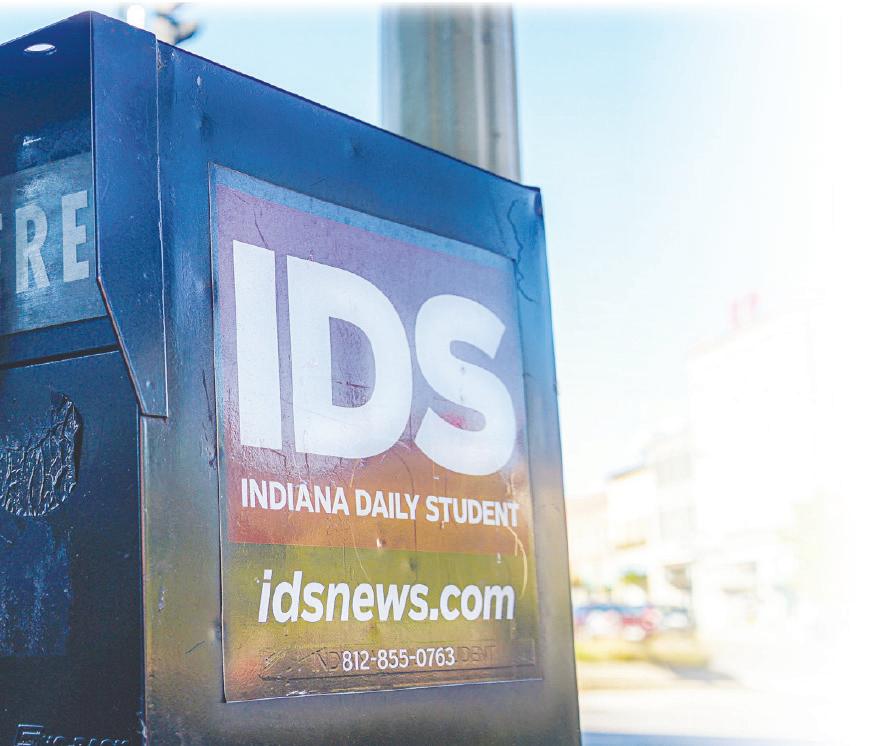
Indiana Daily
Oct. 20

After 157 years of print circulation, the Indiana Daily Student will no longer be found on newsstands beginning this spring semester.
Kate Farr Editor-in-chief
Indiana University (IU) Bloomington’s student newspaper publication, the Indiana Daily Student (IDS), was founded in 1867 and has served the Bloomington campus and community during its 157 years of circulation. However, the IU Media School plans to eliminate the paper’s weekly print edition, effective this upcoming spring semester.
The school publicly announced the plan the afternoon of Oct. 8. IDS co-editor-in-chiefs Marissa Meador and Jacob Spudich received information on the print cut before IU’s formal press release through a leaked copy of the report presenting the plan.
After receiving the report in their inboxes, Meador and Spudich went to the Media School and asked for comment. Media School Dean David Tolchinsky sat down with the IDS, and his statement would be included in their news article breaking the convergence plan.
“Once they knew we were going to write a story on it, they decided to release the plan a day earlier [than anticipated and] before meeting with faculty,” Meador said.
IU’s plan will merge the university’s three flagship student media operations — the IDS, IU Student Television (IUSTV) and WIUX student radio — into a “multiplatform network,” according to the press release.
The IDS has undergone multiple reductions
to its print production and editions since 2017.
According to IU’s Media School, the IDS has seen a decline in revenue for more than a decade, which is “consistent” with a broader national trend of local newsrooms facing economic challenges. To combat this, the Office of the Provost provided about $1 million in support in July, clearing the IDS’s debt and allowing for the publication to “restructure on solid financial footing.”
Tolchinsky wrote a letter to the editor Oct. 21, in which he said that “subsidizing a business model
In February 2022, the president of Texas A&M announced The Battalion, the university’s student newspaper, would stop its printing operations, according to The Battalion’s breaking news coverage of the announcement.
Similar to the IDS’ situation, those at The Battalion weren’t informed of the decision beforehand.
However, Friends of The Battalion, a non-profit formed to promote and sustain the paper, helped the media publication transition to a student organization.
The non-profit also helped the newspaper remain
“People might feel like we’re gone or that our impact is diminished … There are things that a physical medium communicates that digital can’t. There’s something to be said about holding a physical thing in your hand.”
-
MARISSA
MEADOR,
Co-editor-in-chief
for the IDS
on campus that does not reflect the ecosystem off campus won’t adequately prepare students for the career landscape they’re entering.” Spudich and Meador wrote a response to Tolchinsky’s letter on behalf of the IDS staff the same day.
This isn’t the first time a student-run newspaper has faced print cuts by university administrators.
independent and improve staff pay.
Spudich said the IDS article breaking the news — and their letter from the editors the same week — led to “overflowing support” from alumni and community members.
“The importance of the paper is not just something thought of in the newsroom,” Spudich
said. “In our entire community, and wherever our alumni are, [everyone] understands the importance of it.”
Newspaper printing and subscription bases have been on the decline since the mid-2000s. In 2022 alone, according to the Pew Research Center, an estimated total for print and digital daily newspaper circulation in America was 20.9 million, nearly 8 to 10 percent lower than reported the year prior.
Indiana is home to 40 counties with a single newspaper in circulation. One county is entirely without, according to data from “The Expanding News Desert,” an ongoing report by the Hussman School of Journalism and Media.
More than half of all counties in the U.S. have no local news source or only one news outlet left, according to a 2023 report from the Medill School of Journalism. The report, however, underlines that through broadened off-campus and community coverage, student journalism is attempting to bridge the gap seen within news deserts.
Jackie Alexander, president of the College Media Association, said student papers are “filling a void” and informing people in the communities that “need it most.” Alexander also said student media should be led by students, who should be involved in all decision-making. In her opinion, faculty and administrators should be providing advice while navigating around student decisions.
“It doesn’t seem [that method] is what happened with the IDS,” Alexander said. “… I’ve met with
Continued from Page 7
multiple folks who are interested in reinvesting in student-led media that is actually focused on communities or in news deserts … We know that a lot of our student media outlets are filling these news deserts. They’re taking up issues that affect so many more than the folks that are directly on campus.”
While Alexander acknowledges that print sometimes “needs to be removed,” she said it is up to universities to “review with good faith” how print media is performing while making these decisions. She voiced that universities must help create an “appropriate plan and ecosystem where student media can thrive.”
Meador said the IDS staffers felt their voices weren’t included and that IU’s decision was being “forced upon them.” The IDS design team was particularly affected by the decision.
“They design the paper every week,” Meador said. “And after this decision, they [won’t] have the ability to create the print product for every week anymore … I personally anticipate a huge loss of our design staff.”
Meador said since the IDS will no longer have a print publication, she recommends that student journalists, particularly those involved in the design process, take internships or other opportunities that allow them to work in weekly print, even if that means the IDS would lose them.
The way people get their content is changing … We should look at where people consume content, where people make content and kind of steer our organizations — or all three of our organizations — onto a path where students have the ability to understand where the direction of media is going.”
- ASHTON HACKMAN, IUSTV news director
IUSTV news director, Ashton Hackman, said he and other student media leaders have been aware of the plan since the spring of 2024. While Hackman said he wasn’t a part of the preliminary meetings — which included the previous executive director of IUSTV, IU Media School faculty and administration, and other student media heads — he knew “this was coming.”
“I wasn’t really expecting it to be done this school year, so that was the surprise,” Hackman
said. “But we did know that this kind of plan was likely coming down the pipe and something that we were prepared for.”
While the announcement’s timing was unexpected, Hackman said he’s been a “big believer in this plan” since the idea came about at the end of last semester.
“I think [the plan has] been long overdue,” Hackman said. “Media’s changing. The way people get their content is changing … We should look at where people consume content, where people make content and kind of steer our organizations — or all three of our organizations — onto a path where students have the ability to understand where the direction of media is going.”
Hackman said there were better ways to support student media than cutting print. He felt there were other ways to ensure the IDS didn’t experience another deficit.
As one of the student leaders for IUSTV, Hackman said the organization stays “afloat” by not spending more money than it has. Beyond extra support from student media revenue — such as dues or the Media School “stepping in” to help with expenses — Hackman recommends IU’s student media organizations make other financial cuts.
“What the [IDS doesn’t] disclose in that article is the reason that they can still have a profit yet run a deficit … They’re paying for staff pay, they’re helping pay for pro[fessional] staff and the overall expenses for having the organization,” Hackman said. “So, yes, their paper does make money, but they need to consider everything.”
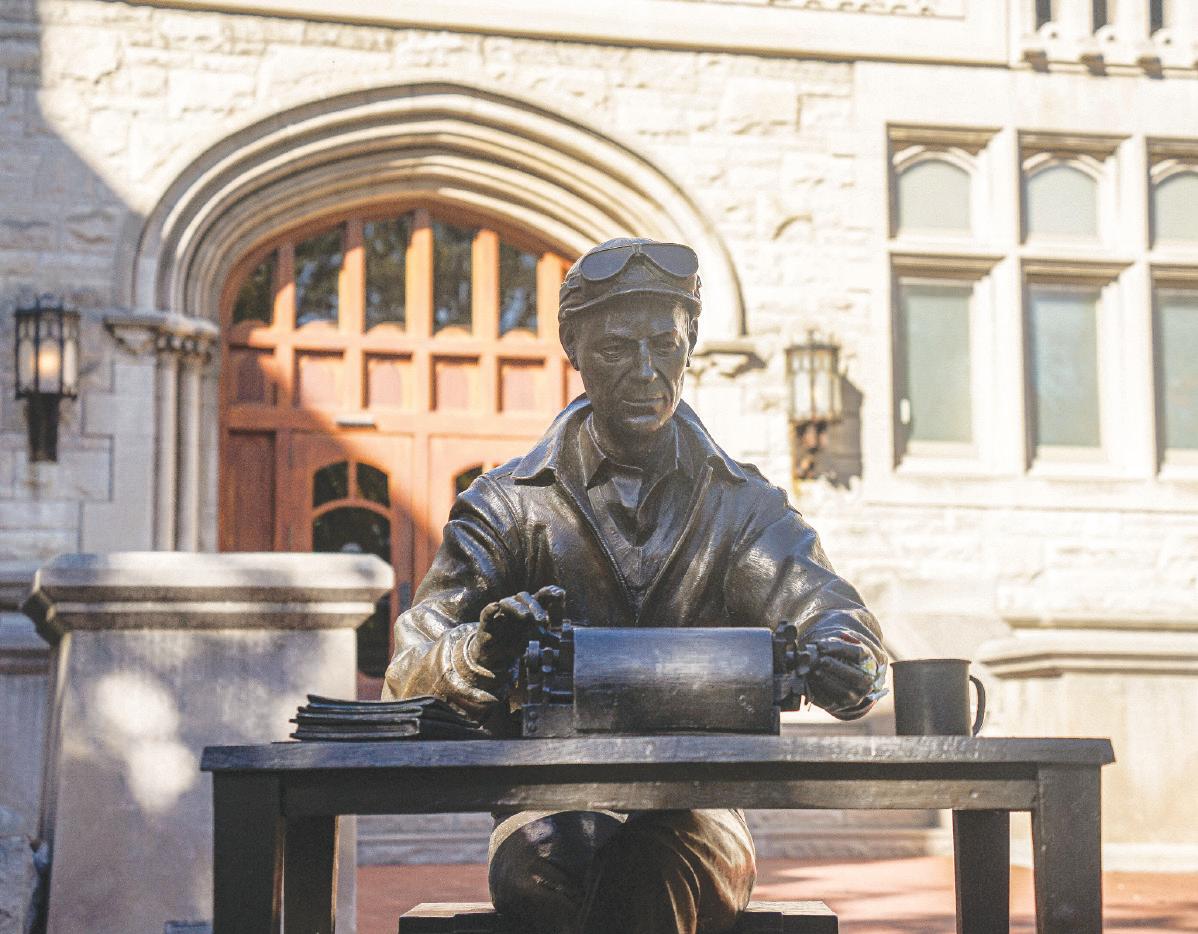
Hackman said that he was glad the university had “step[ped] in” and cleared the IDS’ debt this past summer. The IDS’ future was “put at risk” before the debt was forgiven, Hackman said. He believes the convergence plan will help avoid a similar debt accumulation.
All three student media organizations will retain their independent brands, but business operations will be streamlined to increase efficiency and boost revenue through ad sales on all three platforms. While the IDS is still in print, Meador said she will keep “hammering home” the importance of a print medium.
“People might feel like we’re gone or that our impact is diminished,” Meador said. “Cutting print will have a negative impact … It will lose up to $58,000 in revenue per year. We don’t see that as a positive thing … There are things that a physical medium communicates that digital can’t. There’s something to be said about holding a physical thing in your hand.”
As the end of the fall semester approaches, Spudich said he hopes people will continue to speak up on print retention for the IDS, as well as consider donating to their fundraising efforts. But with the current plan still in effect, he said the staff will “just keep the motor going.”

DN Left: Indiana University’s Franklin Hall, which houses the Media School and the Indiana Student Daily newsroom, is photographed Oct. 20 in Bloomington, Ind. IU has a 100-year-old journalism program and more than half-century-old telecommunications and film studies departments. KATE FARR, DN

“[We’ve] dealt with the burden of, like, ‘Oh, these papers, we only have a couple of them left,’” Spudich said. “If print cuts actually come into effect in the spring, it’s just important other people come forward … Our newsroom is incredibly resilient. They’ve continued to provide information to our community day in and day out. This paper is a product of teamwork.”
Contact Kate Farr via email at kate.farr@bsu. edu.























Ball State women’s basketball was ranked No. 1 in the Mid-American Conference (MAC) preseason poll, as voted by conference head coaches. They were also voted to win the conference tournament. Senior Ally Becki was named to the Preseason All-MAC First Team while senior Madelyn Bischoff was named to the Second Team.






Cardinals’ men’s basketball was ranked No. 7 in the Mid-American Conference (MAC) preseason poll, as voted by conference head coaches. Senior center Payton Sparks was named to the Preseason All-MAC First Team. Sparks, the former MAC Freshman of the Year, transferred back to Ball State from Indiana University last spring.
Ball State men’s tennis is set to head into its last weekend of fall play before the regular season starts next semester. The Cardinals are headed to Kalamazoo, Michigan, to face Western Michigan University in the fall Mid-American Conference (MAC) indoor competition. Last season, Ball State’s season ended in the semifinal of the MAC tournament.

















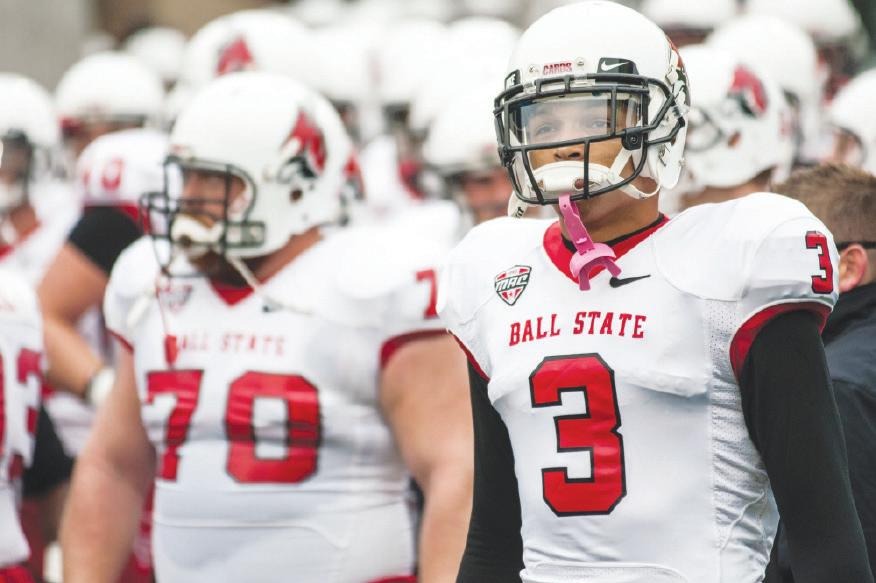
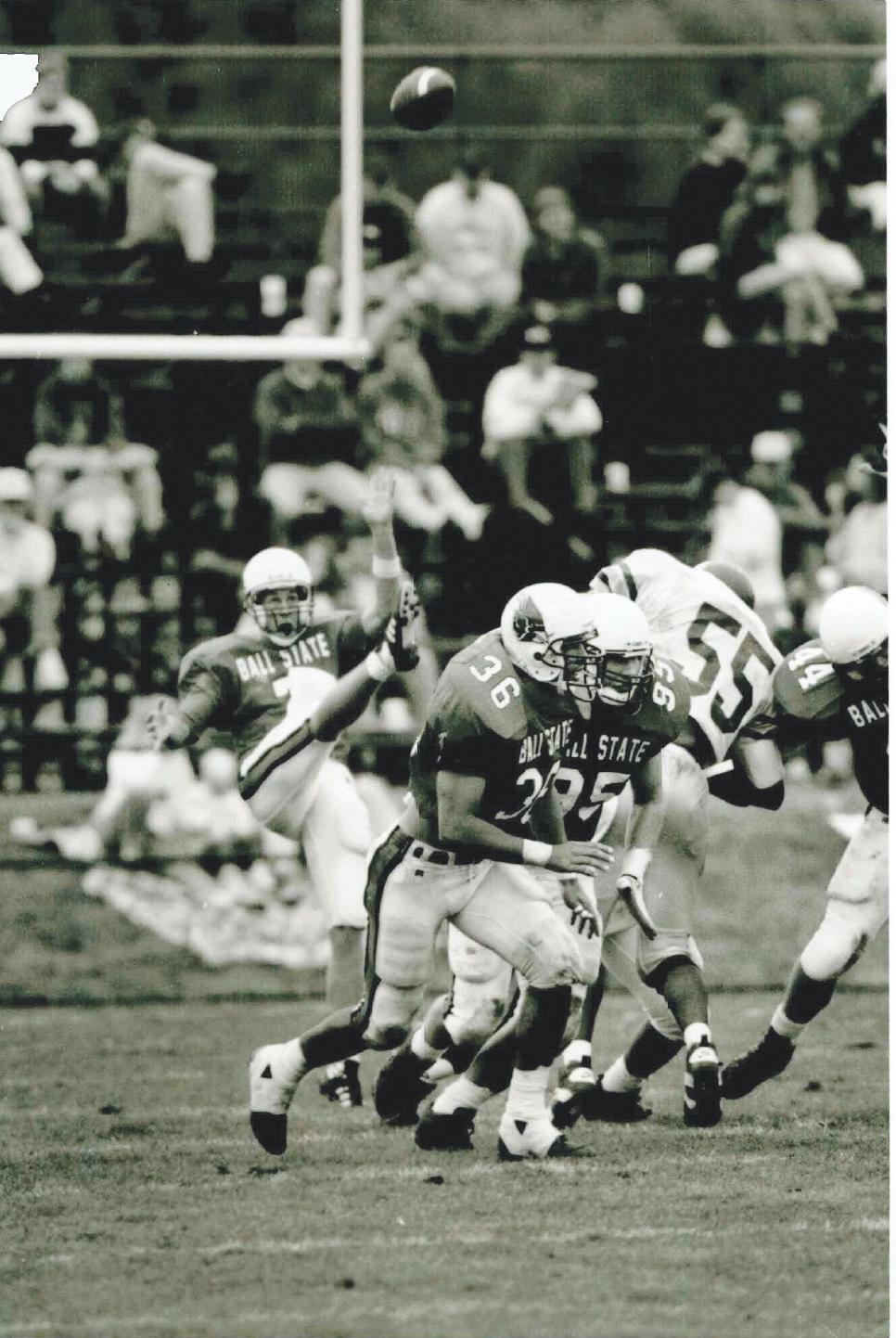

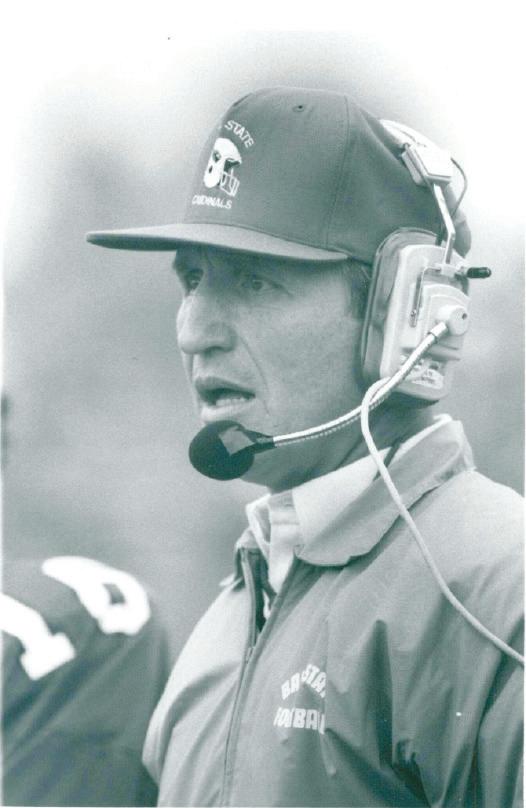






BRENDEN ROWAN, DN ILLUSTRATION






























1924





1924




1949


John Magnabosco was the first head coach in the modern football era for Ball State. The Cardinals honor its yearly MVP with the John Magnabosco Award.



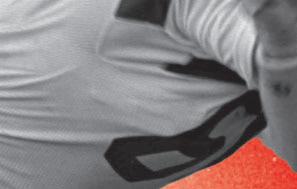








1940

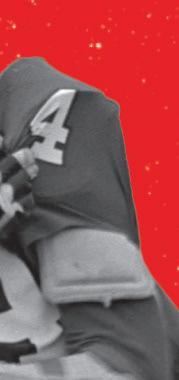

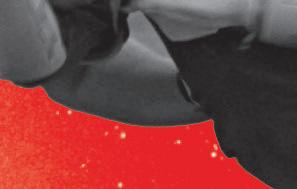



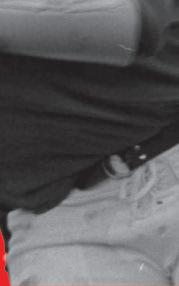

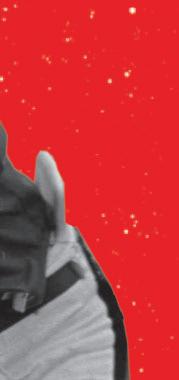
































The 1949 football team won the first conference title for the program. Here, they are pictured dining in the Pine Shelf restaurant as a team. The restaurant once stood near the village on McKinley Ave.

The Victory Bell is a staple of the rivalry between Ball State vs. Indiana State. The bell was donated by the Hinshaw family, who used it as a dinner bell on their farm.














1956



1965




















Ball State played Bowl in 1965. bowl game. The Grantland Rice, sports writers FIRST BOWL






















Ball State football was played in the field where Burris Laboratory School now plays soccer. While it has a stadium structure, it more resembles a traditional high school stadium.





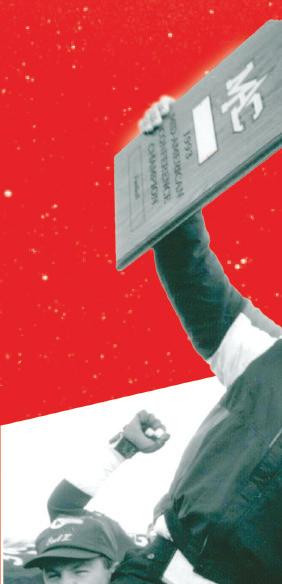
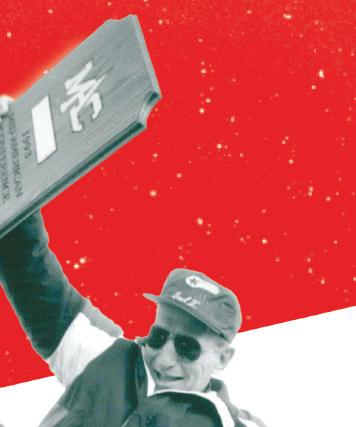
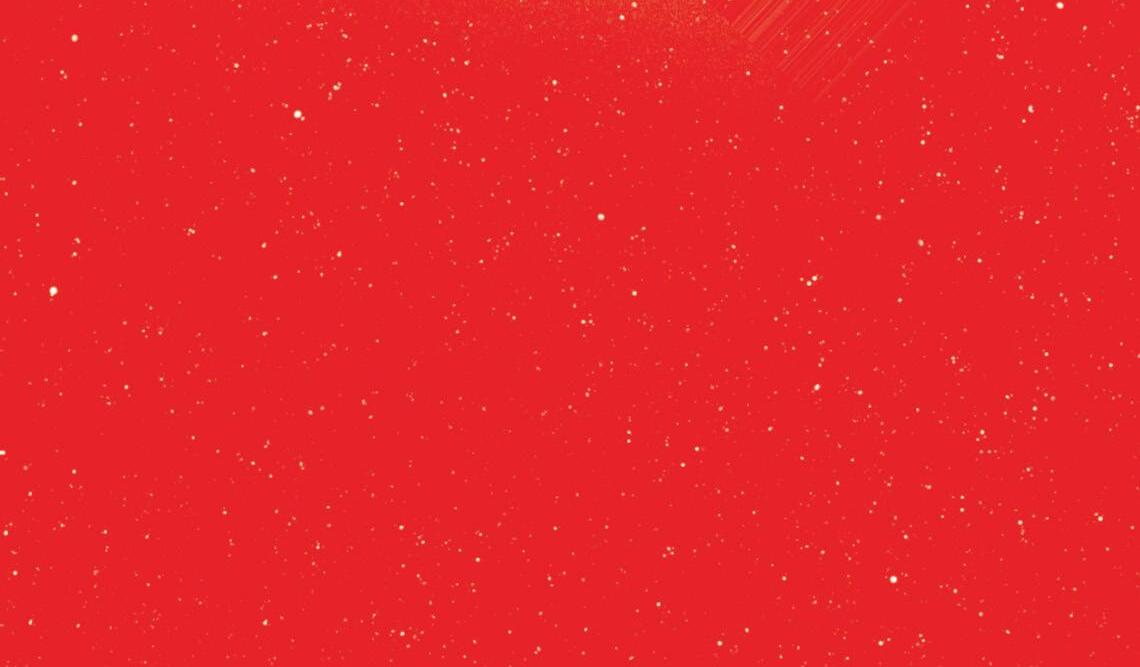

GAME

played the Grantland Rice 1965. It was the program’s first The game was named after Rice, one of the most influential writers in American sports.














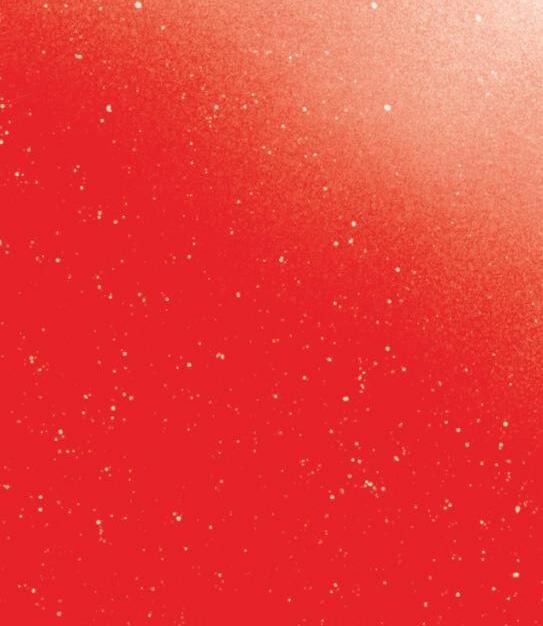

























Current Ball State head coach Mike Neu celebrated the 1993 MAC Championship with head coach Paul Schuel on his shoulders. It was the second, and last, MAC Championship the Cardinals won under Schudel.




Ball State played Indiana University in Lucas Oil Stadium in 2011. The two schools game went down to the wire with the Cardinals beating the Hoosiers. A ten-point third quarter aided Ball State’s victory.


In 1967, Ball State built the Ball State Stadium. It is the current home of the Cardinals and is now named NEW STADIUM



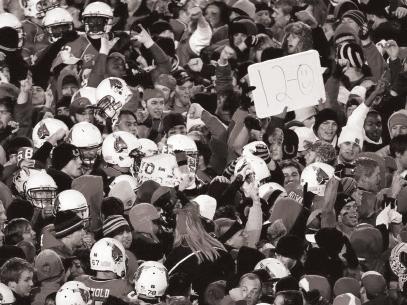
2020 MAC CHAMPS




the School stadium traditional








2008 Ball State notched its best season of the current millennium in 2008 by going 12-0. The Cardinals also were ranked in the AP Poll but lost its final two games to finish its campaign 12-2.


Ball State notched its last MAC Championship in the midst of the COVID-19 Pandemic. The Cardinals went on to win the Offerpad Arizona Bowl against No. 19 San Jose State.





Ball State football program reaches 100 years.
Elijah Poe Reporter
For 100 years, players have laced up their cleats, coaches have blown whistles and fans have cheered for the Cardinals.
For 100 years, Ball State football has been a staple in the Muncie community. It has brought people to Muncie, roused celebrations and stirred up emotions.
For 100 years, there have been wins and losses. With wins and losses, fans have been with the Cardinals throughout.
Ball State football is filled with memories and moments spanning a century.
Current Cardinal head coach Mike Neu said the 2024 Cardinals have embraced the role of “Team 100.”
“You want to make sure that with the rare opportunity that you have, you make it count,” Neu said.
Junior tight end Tanner Koziol said one of the best things about being on Team 100 is the previous teams are all looking to them now.
“There is pride in it,” Koziol said. “There is pride in putting on the jersey and knowing players have played here before you, and they are watching.”
Although modern fans are used to the Cardinal red, the Hoosieroons were the first team fielded by Ball State in 1924. They played in the now-extinct Indiana Intercollegiate Conference (IIC) alongside long-time rival, Indiana State.
A campus-wide competition in 1927 led to the name change. Head coach Paul B. (Billy) Williams nominated the “Cardinals” as mascot after his favorite Major League Baseball team: the St. Louis Cardinals.
Williams and the Cardinals struggled in their first years on the field and in recruiting due to a lack of desire to play at a teacher’s college.
It would be more than 20 years until the small teacher’s college got its star coach, John Magnabosco.
“Magnabosco’s unique name was a constant target for nicknaming, too,” Bruce Geelhoed wrote in his book, “Football at Ball State University: 1924-2001.” “Known on campus as Uncle John, the Big Boss, Mag, the Big Mag, or more commonly, simply as Maggie, the football coach was one of Ball State’s most visible personalities.”
It is said Magnabosco inherited a football
program that did not have any interest in the community’s mind. While being a personality on campus and winning on the field, crowds grew in attendance to watch the Cardinals.
Magnabosco earned the university’s first-ever conference championship in 1942, winning an IIC title.
Head coach Ray Louthen followed Magnabosco and immediately carried on the momentum that was built by his predecessor. He led the Cardinals to six consecutive winning seasons with multiple conference championships. He also led them to the Grantland Rice Bowl, the first bowl game for the program.
Louthen won four straight IIC titles between 1964-67.
With players like Tim Brown, Jim Todd and Chuck Streetman getting drafted in the NFL, the quality of players produced by the college was turning the team into a real threat.
As the Ball State brand was growing, so was its need for a new stadium. The new state-ofthe-art Ball State Stadium, built in 1967, was packed regularly.
All of these factors led to a football boom in the 1970s.
The Mid-American Conference
Ball State joined the Mid-American Conference (MAC) May 22, 1973, but the school did not enter the conference on the field until the 1975 season.
To this day, a week does not go by that I am not in touch with some of those players or some of the people I worked with on that campus.”
-
PETE
LEMBO, Former Ball State head coach
There was skepticism about whether the new conference members (Eastern Michigan, Northern Illinois and Central Michigan) could compete, but then Ball State president John J. Pruis assured the teams on the court and field would be competing for championships within five years.
Now, Ball State is a MAC staple.
As a player and coach, Neu feels the MAC does not get enough recognition.
“I just think that the level of competitiveness week in [and] week out that you see in this conference helps prepare players not only for football but also for life,” Neu said. “… I think it’s a hidden gem that shouldn’t be a hidden gem.”
Under head coach Dave McClain, Ball State finished third in its first year of MAC play, posting a 9-2 record in 1975. The following season, McClain and the Cardinals won their first MAC Championship with an 8-3 record.
In 1978, the Cardinals picked up another MAC title under Dwight Wallace.
The most decorated coach from the 1980s was Paul Schudel, who replaced Dwight Wallace. Schudel graduated from Miami (OH) and was an assistant coach at the University of Michigan under the legendary Bo Schembechler.
“We were going to be tough,” Neu said. “That was really the attitude he instilled in his teams. The discipline and attention to detail, they were front and center.”
Schudel led the Cardinals from 1985-94 and posted a record of 60-48-4.
Ball State won the MAC Championship in 1989, and with that came a post-season bowl game.
The Cardinals took on Fresno State in the 1989 California Raisin Bowl, losing 27-6.
Cardinals dominate the MAC in the 1990s
Ball State won its third MAC Championship in 1993 and played in the Las Vegas Bowl. Players like Keith McKenzie, Brad Maynard, Cory Gilliard and Blaine Bishop were just a few who were drafted to play in the NFL.
Maynard, a punter, was so good that he was the MAC MVP and the MAC Defensive Player of the Year in 1996.
Neu was the Cardinals’ quarterback from 1990-93. In the homecoming game of 1993, the Cardinals were losing 30-3 to Toledo with 4:10 remaining in the third quarter. Neu led a comeback that saw him throw a touchdown pass with time running out to even the score 30-30. The extra point put the Cardinals ahead 31-30, ballgame.
“I believe my job that day was to make sure all those guys on that sideline still believed in that,” Neu said. “That’s the one thing that I will always remember, besides what took place on the field. … It was on the verge of the worst homecoming performance in the history of Ball State [and became] one of the better ones when it was all said and done.”
After Paul Schudel left Ball State in 1995, Bill Lynch took over as the 12th Ball State football head coach.
The Cardinals notched their fourth MAC Championship just a few years after their third in 1996, again playing in the Las Vegas Bowl.
“It was a great place to coach with great guys to coach,” Lynch said. “That really was a great football team.”
Ball State upgraded training facilities during this time, adding a lighted practice field with turf and raising the seated capacity at the stadium to 21,000 in 1996.
The Lynch family was an “Indianapolis Family.” So, when they moved to Muncie, Bill said they went through some adjustments.
Kevin, the current assistant head coach and quarterbacks coach at Ball State, remembered making the move with his family.
“I can’t think of many memories as a kid that didn’t have to do with Ball State football or athletics in general,” Kevin said.
The Lynchs drove back and forth to Muncie after Bill retired to watch ballgames and be with family. Eventually, the couple realized Muncie was their true home and bought a house in the area.
“There is a reason why we moved back here after I retired. [It’s] because of the people here,” Bill said. “Obviously, our grandchildren were here, but we just really enjoyed Muncie.”
Since 2000, Ball State football has gone through its ups and downs.
The Cardinals picked up a MAC West Division title in 2001 with its 5-6 record but failed to convert any real momentum until the 2008 football season.
The 2008 Ball State squad finished with a perfect 12-0 in regular season play. The Cardinals won the MAC West Division and faced Buffalo in the MAC Championship.
They were led by head coach Brady Hoke, and he was able to get them as high as No. 12 in the Associated Press top-25 poll.
In the end, Ball State was routed by Buffalo 42-24 in the championship game and went on to lose their GMAC Bowl against Tulsa weeks later 54-13.
After the season, Hoke left for San Diego State for two seasons before being offered the head coaching job at the University of Michigan. Pete Lembo was the next coach to step up for the Cardinals.
“It was a very special part of my career and our lives as a family,” Lembo said.
The 2012 Cardinals were led by 2024 Ball State Hall of Fame inductee Keith Wenning and current NFL wide receiver Willie Snead IV. The pair
helped Ball State go 9-4 on the season, earning a spot in the Beef ‘O’ Brady’s St. Petersburg Bowl. The Cardinals lost 38-17 to the University of Central Florida.
Lembo said a majority of players for the Cardinals at that time were underrecruited, or it was their only Football Bowl Subdivision offer.
“We had a lot of gritty, overachieving guys,” Lembo said. “Those teams were tight-knit. Guys had great relationships with their coaches.”
Wenning and Snead IV had an impressive season in 2013, and their skills boosted the Cardinals to a 10-3 record. Snead had 1,429 receiving yards, and
Currently, Lembo is the head coach of the University of Buffalo, who is also in the MAC. The Cardinals will take on Lembo’s team Nov. 12 at Buffalo.
Once Lembo was out, it was time for a “Neu” era.
In 2019, the Cardinals finished with a 5-7 record but had favorable statistics. The following season, the Cardinals got over the hump amid a global pandemic.
Ball State bolstered a 7-1 record in a shortened season due to COVID-19. The Cardinals were MAC West champs and MAC champs. Ball State also notched its first bowl game win in program
There is pride in putting on the jersey and knowing players have played here before you, and they are watching.”
- TANNER KOZIOL, Junior tight end
Wenning threw for 3,993 yards. The season ended in a 23-20 GoDaddy Bowl loss to Arkansas State.
In 2015, Lembo departed the program to become an assistant head coach and special teams coordinator at Maryland.
Lembo went 33-29 and 23-17 in the MAC during his five seasons in Muncie.
“To this day, a week does not go by that I am not in touch with some of those players or some of the people I worked with on that campus,” Lembo
history when they won the Offerpad Arizona Bowl against No. 19 ranked San Jose State 34-14.
“To be able to win the first championship in 24 years, and to win the first bowl game in school history, was awesome,” Neu said. “There was a lot of hard work by the players that went into that.”
Neu said the 2020 Cardinals had the best accountability he has ever seen out of a football team. Each player had to hold themselves accountable and limit social interactions during the pandemic.
Senior linebacker Keionte Newson, who is True Cardinal No. 1 and the leader of the 2024 defense, was a freshman during the 2020 MAC Championship run. His distinction as TC1 means Newson is the leader of Ball State football as a whole alongside other True Cardinals.
“It was just so fun,” Newson said. “We all enjoyed being around each other and winning those games. “Everybody was excited in Muncie. We came back after the MAC Championship during COVID, and people were all outside [the facility] waiting for us to get back.”
The 2021 and 2022 seasons were dominated by one Cardinal: Carson Steele. The current Kansas City Chief running back rushed for 891 net yards in 2021. He was also aided by Plitt, who compiled 2,541 yards through the air in 2021.
Steele and the Cardinals earned a spot in the 2021 TaxAct Camilla Bowl with its 6-6 record and lost to Georgia State 50-21.
Steele broke out again in 2022 with his 1,556 rushing yards, but the Cardinals failed to make a bowl game with a 5-7 record after losing its final three games.
The Cardinals have not been to a bowl game since 2021. The 2024 Cardinals sit at 2-5 after its first seven games.
Regardless of how the 100th season finishes, Neu and the football program want to do their best to honor those who came before them by acknowledging the history of Ball State football. Contact Elijah Poe via email at elijah.poe@bsu.


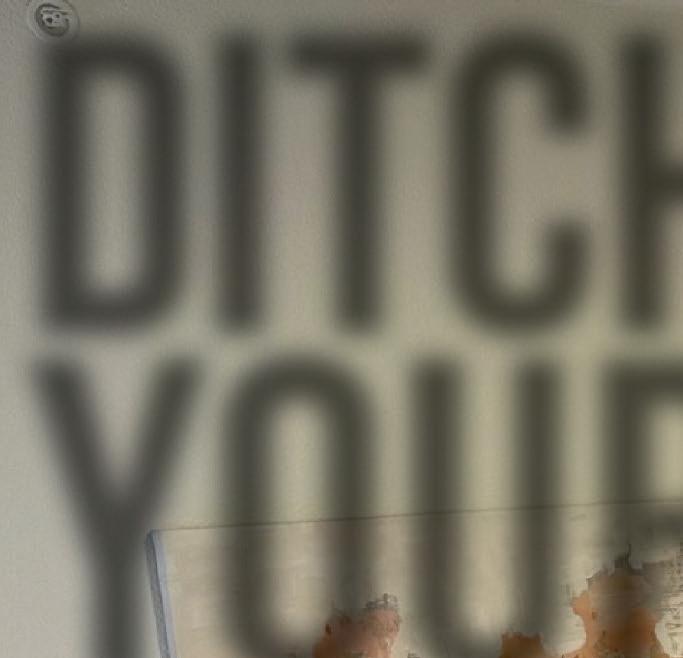



After medically retiring from football, fourth-year media major Tommy West found a new outlet in making music.






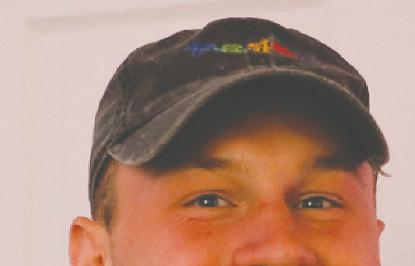
Student success coaches will be stationed in the Atrium Oct. 31 from 10 a.m. to 1 p.m. to provide tricks for success and resources on how fear can impact students. Student success coaches say fear can possibly sidetrack our personal and academic journey if we don’t learn from it, according to Ball State’s event calender. Cardinals are encouraged to stop by at their convenience “for tricks (and treats).”
Guest artist John Gouwens will perform Oct. 26 at 11 a.m. near the bell tower for an outdoor concert. Gouwens will be playing the carillon, a percussion instrument consisting of a keyboard and 23 bells, which he specializes in. Attendance at the homecoming carillon concert is free and open to the public, and the concert will last about an hour.
Minnetrista’s final outdoor farmers market of the season will be Oct. 26 from 9 a.m. to noon. With the colder months approaching, Saturday farmers markets will resume in May. The farmers market is “the perfect place” to find things like fresh produce, baked goods, eggs, meat and plants, as well as connect with vendors in the Muncie community.
Fourth-year media major Tommy West’s music production became an outlet for his trauma.
Daniel Kehn Reporter
Like most younger brothers, Tommy West always looked up to his older brother, Jacob, especially on the gridiron.
“He’s why I played football because he died playing football,” West said. “He had a heart attack at practice and he wore 26, so I played for him.” Jacob had an undiagnosed heart condition at birth called Arrhythmogenic Right Ventricular Dysplasia, a genetic disorder that can cause sudden death in young, seemingly healthy people, according to John Hopkins Medicine. West was just 12 years old when his brother died at 17 and developed a stutter in the aftermath.
then-ongoing COVID-19 pandemic had students in lockdown. West said he felt like he was going stir-crazy in his dorm room when he decided to try something creative to break the boredom.
“I just tried singing on a beat that I made one time in my dorm, then I made seven more of those,” he said. “I had a collection where I was like, ‘I can kind of do this. I’m not good yet, but I know I can do this.’”
West had always been interested in music but had not spent much dedicated time giving it a shot. The recovery time in his dorm turned out to be a blessing in disguise.
“That’s when I realized, maybe football doesn’t have to be my life because I can find other outlets that can make me happy,” he said.
The following year, West transferred to Ball State, majoring in media with an audio production concentration, and sought training to improve his vocal skills. Making music helped him work through his stutter and overcome his interactions with others.
I still miss football. I know it’s just a game [but] I’m never going to play it again, and I think that’s why I love music. Because it can give me that dopamine hit.”
- TOMMY WEST, Fourth-year media major
After graduating from Danville High School, he went on to play linebacker at DePauw University before an injury during practice would alter the course of his life.
“We were doing one-on-one [drills], and [I] dove for a ball, came down, and my elbow broke two of my ribs [and it went] into my spleen,” West said. Initially, doctors told him he would be alright and to take some Advil. When the pain persisted, he went to another hospital and was immediately sent in an ambulance to Good Samaritan Hospital where he spent a week in the Intensive Care Unit. At the time, he “had no clue” how bad the injury really was, but his parents were told when they arrived that West had lacerated his spleen.
“My mom started crying. Her face got all pale, and I was like, ‘Mom, I’m fine, I’m right here,’ but they said I was 12 hours away from bleeding to death in my dorm room if I didn’t go to the hospital,” he said.
West fully recovered, but returning to football would require a complex protection system due to his injury. Even with said system, if he were to take a hit in the spot of his injury again, it could be life-threatening.
The writing was on the wall for his athletic career.
“I love football. It was my whole life until [then]. I hated watching people play when I couldn’t play,” West said. “I saw my love fall away from me.” He would need to spend the next three months recovering in his dorm room. On top of that, the
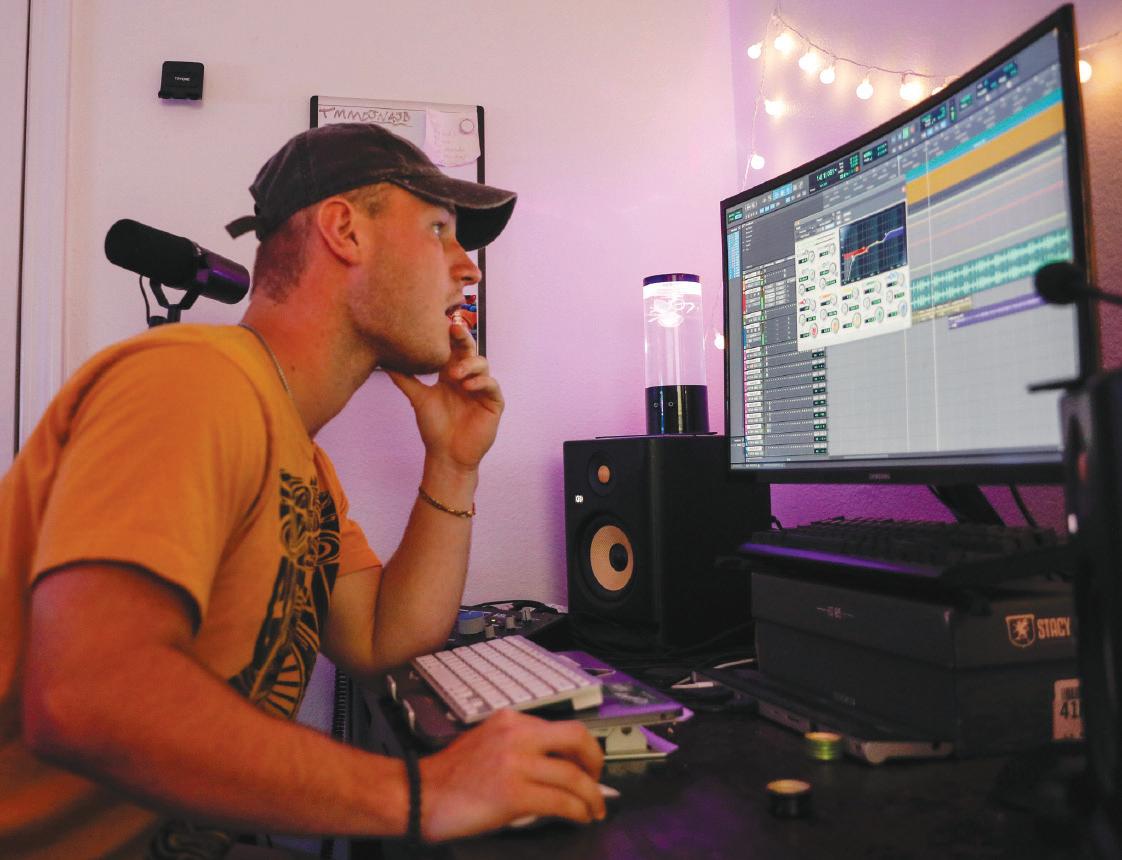
“I can hear myself back, and I finally don’t hate how I sound,” he said. “I’m also a tour guide here, and I’ve gotten a lot better at speaking to people. I used to not be able to make eye contact because I was so nervous about stuttering.”
Now a fourth-year, he has been creating R&B and pop music under his given name for three years now.
“I taught myself everything about making music. I love it,” West said. “I still miss football. I know it’s just a game, [but] I’m never going to play it again, and I think that’s why I love music. Because it can give me that dopamine hit.”
Fourth-year audio engineering major John Marino, who makes house music under the name JXHN, produces music for several artists and has collaborated with West numerous times.
“A lot of the time, we’re in the same room together because it really is a collaborative process,” Marino said. “When you’re making music and trying to create lyrics and a story behind it, I think it’s really important to have a person who is singing on it [provide] their input as you’re creating it.”
The two met at a house party early into West’s time at Ball State and got to talking about music. West mentioned that he sang and Marino brought up his own interest in making music. The two were in the studio a few days later.
“When I play something or find something, anything that piques his interest [and] he’ll let me know,” Marino said. “It is a collaborative process, like, I’m driving the car if you want to put it that way, but he’s giving me directions.”
The two are currently working on a song called “The Feeling” that will be released in November.
“For [this song], I was digging through an old sample pack on my computer that I hadn’t opened in a really long time, and I found a one-shot of, I think, a Daniel Caesar song of him saying the feeling — an ad-lib or something,” Marino said. “I put that into my keyboard and started sampling it, [and] we created this whole story just based off of that: the feeling of falling in love.”
As he’s grown as an artist, West has collaborated with other students across campus, including fourth-year communication and media studies major Bachka Batjargal. Batjargal said the two got acquainted through a mutual friend who also creates music. The two got off the ground while meeting up in West’s dorms in Botsford/Swinford Hall.
One day, we talked in person, hung out [and] made a song. We just really vibed together instantly that first night and have been close ever since.”
- REGGIE GOINS, Fourth-year media production major
“I just started talking to him, and I think it just clicked because our perspectives on music were very similar,” Batjargal said. “We had a lot of similarities in terms of artists that we were into, the kind of music that we like and the kind of music that we produce.”
While music brought them together, Batjargal said the two grew close as they continued to create music.
“Chemistry is a very big thing with music,” he said. “If you can work with different kinds of people and be able to bounce off ideas, that’s the kind of partnership and friendship that just works.”
Batjargal, who uses his first name Bachka as his artist name, has collaborated with West on the
songs “Body Shots,” “What’s the Vibe” and “hear it once say it twice,” among others.
Batjargal introduced West to fourth-year media production major Reggie Goins, who said they clicked almost immediately.
“One day, we talked in person, hung out [and] made a song,” Goins said. “We just really vibed together instantly that first night and have been close ever since.”
The song titled “When Nobody’s Home” was released last year and helped kick off their relationship. Goins, who goes by the artist name RazeGuage, said his musical style is very diverse but finds new avenues when working with West.
“We tend to meet in the middle, and we tend to do more acoustic stuff,” he said. “That stuff where I feel comfortable on and he feels comfortable on. It just meshes very well when we are able to come to that common ground where we are both like, ‘We can do this.’”
More than 10 years after Jacob’s death, West has grown through his grief thanks to his music. About a year ago, he dedicated a personal, unreleased song to Jacob titled “Forever Swollen.”
“It’s actually exactly a minute and 26 seconds long. It just happened,” West said. “That’s like some God stuff going on right there.”
Contact Daniel Kehn via email at daniel.kehn@ bsu.edu or on X @daniel_kehn.

The dark comedy “Revolt. She Said. Revolt Again.” is onstage at Schafer Theater.
Trinity Rea Print Managing Editor
EDITOR’S NOTE: Visual Editor Brenden Rowan is a part of the technical team on this production and is pictured on pg. 21. However, Rowan did not participate in the writing, photographing or designing of this story.
Karen Kessler remembers where she was when she heard the Dobbs v Jackson ruling in 2022: a Muncie home she shares with her mother.
Kessler recalled the fear she felt at that moment.
“I was crying, she was crying, and I remember looking at her and saying, ‘I’m so sorry, I’m so sorry,’” she said.
Kessler said her fear was fueled by the ruling and the fact that even though her mother’s generation fought for equality before her, the work they put in was seemingly becoming undone.
By “taking [her] eyes off the ball,” Kessler said she feels that men in power will continue to strike
back in the one way they know how: by “making [women] into objects.”
“I get frustrated, I get mad, I worry, but I fight,” she said. “... It turns out the weapon I have to fight with is my art.”
“Revolt. She Said. Revolt Again.” directed by Kessler, is currently on stage with Ball State University’s Department of Theatre and Dance at Strother Theater. The play, written by Alice Birch and first performed in 2014, runs every weekend until Oct. 27.
Over four acts, Kessler said Birch writes in a feminist voice that aims to deconstruct language and showcase the struggle of women in a world constructed against them.
Scenic designer Emma Mercedes said the first act focuses on women functioning in a world controlled by masculine language, while act two focuses on generational trauma experienced by women.
See REVOLT, 21


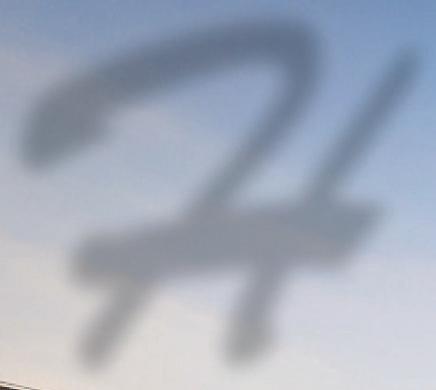








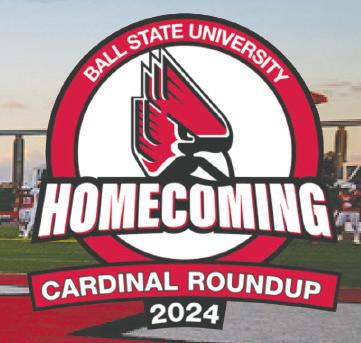







Continued from Page 19
Act three breaks down society and showcases “chaos,” illustrating the idea that society has “made such a mess they lost the point.” When act four begins, the stage settles and encourages reflection. The dark comedy attempts to break down the idea of the patriarchy and emphasize how women can revolt against it.
Kessler said her approach to picking — and now directing — the show was fueled by the strong feeling to do things that “say this [fight] is painful.”
“The irony of it is the fact that we have to do a play about how patriarchal language restricts us, and, boy, when I say that out loud, it sounds so freaking boring,” she said. “… [Revolt’s] very human and very clear about what it is. It doesn’t just call out men. It also calls out top feminism and academic feminism and all of those things that have rules instead of just lighting matches and burning shit down.”
The show’s stage manager, Allison Moss, said working with Kessler to bring the production to life has been an extremely unique and rewarding experience.
“The show is dark and funny in a way that Ball State Theatre hasn’t — at least in my time here — dove into,” Moss said. “... Karen specifically is fantastic at challenging men in an everyday world. It’s been really cool to watch somebody who is so for gender equality and female empowerment, and speaks out so actively about it, to put something on with the goal and full intention of making men uncomfortable.”
Moss said she values the show for its ability to make her audiences feel empowered. She said with the upcoming election, this value is especially important.
Putting on the show has not come without challenges, as Moss noted that production for the play only started in early September. She said the show is interpretive and “very theater,” making it initially difficult for her and other crew members to navigate and translate different aspects of the show.
The irony of it is the fact that we have to do a play about how patriarchal language restricts us, and, boy, when I say that out loud, it sounds so freaking boring … [Revolt’s] very human and very clear about what it is.”
- KAREN KESSLER, Director
Regardless of this, she said working through the initial kinks has been worth it, especially in light of the current political climate.
“I think that it’s important for men to get such a raw perspective on it … Anybody who comes to see it, who possibly doesn’t have the best understanding of some of the things women go through, I hope that they could take away some of the messages from the show and consider that when they go and put in a vote for somebody,” Moss said.
Mercedes, who’s been working on the show since this past spring, said designing the show has been a struggle due to the lack of directions for the set in the script, but also because of the complexity of the show’s four acts.
“It’s been a really interesting experience, especially since we have decided [on] this vaguely meta theater theme … We have all had such a hard time piecing together what we think this show exactly means, but I think that’s the beauty of it, though. The beauty of it, in my opinion, is that anyone can take away a meaning to it that’s different from everyone else,” Mercedes said.
She said creating this show alongside her peers in different departments and older staff members of the college has been incredible.
“It’s very interesting working with a director that’s older than me because me and her have different views on feminism, not very different, but different in the sense of generational progression,” Mercedes said. “It’s been interesting to try to pair our views of feminism together in a way that feels cohesive and correct to both of us.”
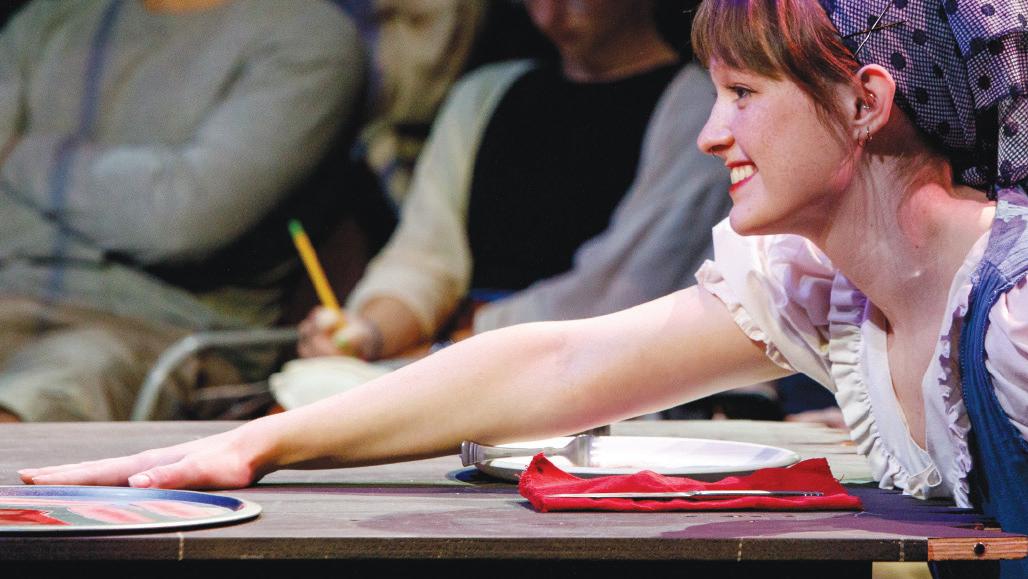

We have all had such a hard time piecing together what we think this show exactly means, but I think that’s the beauty of it, though. The beauty of it, in my opinion, is that anyone can take away a meaning to it that’s different from everyone else.”
- EMMA MERCEDES, Scenic designer
Tickets for “Revolt. She Said. Revolt Again.” are available through the College of Fine Arts Box Office at Sursa Hall, by phone at 765-2858749 or online.
Kessler asks that those planning to see the show should do so with an open mind.
“If Dobbs wasn’t a message, then we’re not going to get it. [Revolt’s] important, even if it’s one person who watches this play and goes, ‘OK, I know how I’m going to vote,’ or, ‘That helped me make up my mind,’” Kessler said. “… Hopefully this will be a sign … It’s just understanding that we’re asking people to watch this thoughtfully.”
Contact Trinity Rea via email at trinity.rea@bsu. edu or on X @thetrinityrea.



A CARDINAL, ONCE A CARDINAL, ALWAYS A CARDINAL ALWAYS A CARDINAL
Take a look at the events offered around campus during Ball State University’s 85th annual Homecoming Week.
THURSDAY, OCT. 24 FRIDAY, OCT. 25
AirJam & Royalty Coronation
7:30 p.m. | Emens Auditiorium



Bed Race Noon | Riverside Avenue
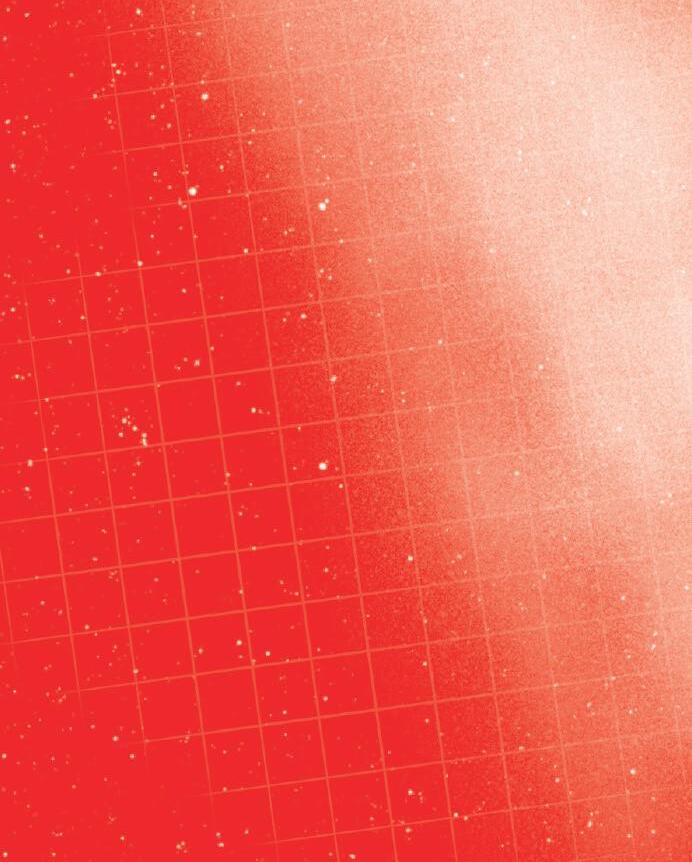

Chase Charlie 5K





SATURDAY, OCT. 26


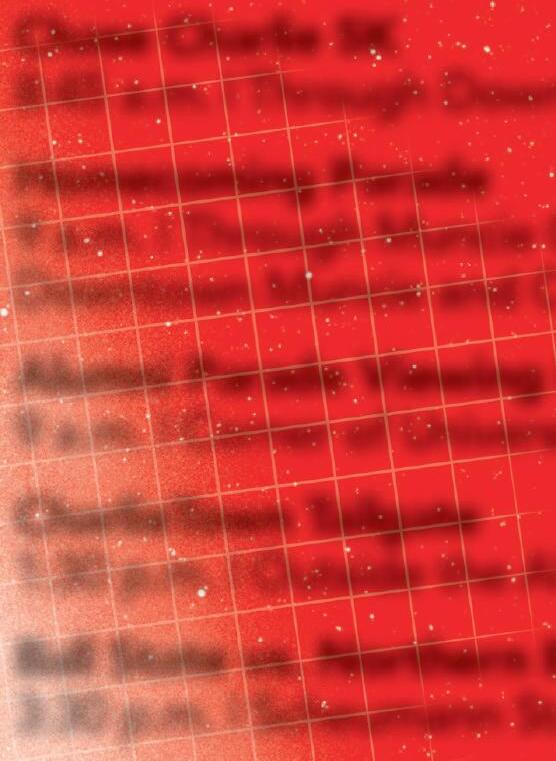
Homecoming Parade




8:45 a.m. | Through Downtown Muncie and Campus

Alumni Parade Viewing Party
CharlieTown Tailgate


9 a.m. | Through Muncie Central High School, Downtown Muncie and Campus



9 a.m. | Corner of University and McKinley Avenue
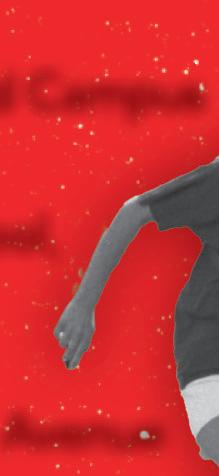
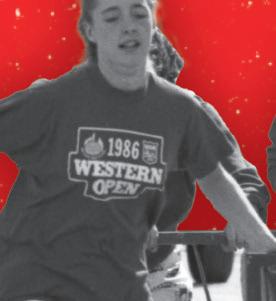

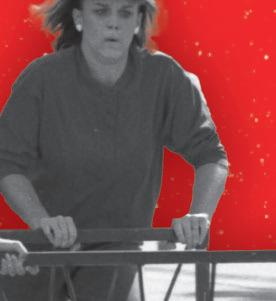

1:30 p.m. | Outside the Alumni Center
3:30 p.m. | Scheumann Stadium

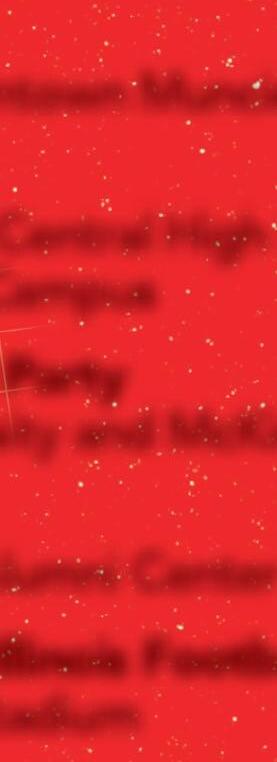



Ball State vs. Northern Illinois Football Game

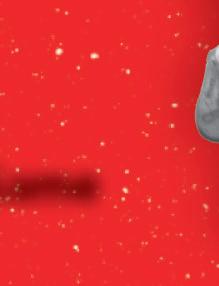
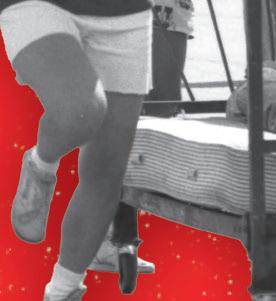

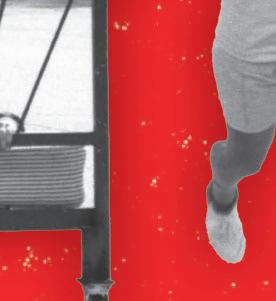



of “The Mary Tyler Moore Show”
“Really?”
27 Signs that the party’s over? 28 Clinging to a lead 32 “Clearly”
33 Diary writer in a Rachel Renée Russell series
35 Gamer’s mad dash to complete a level
36 Africa’s last absolute monarchy 38 Area guarded in many sports 39 John with an EGOT 41 Computer security brand 42 Fell behind 43 Scylla’s head?
48 House of Fabergé patron 49 __ filter
50 “Rectify” star Young
Spanish “that”


